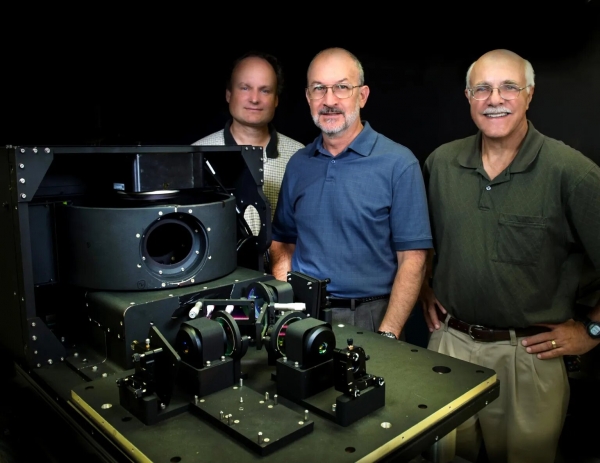It took the Plankton, Aerosol, Cloud, ocean Ecosystem (PACE) mission just 13 minutes to reach low-Earth orbit from Cape Canaveral Space Force Station in February 2024.
It took the Plankton, Aerosol, Cloud, ocean Ecosystem (PACE) mission just 13 minutes to reach low-Earth orbit from Cape Canaveral Space Force Station in February 2024. It took a network of scientists at NASA and research institutions around the world more than 20 years to carefully craft and test the novel instruments that allow PACE to study the ocean and atmosphere with unprecedented clarity.
In the early 2000s, a team of scientists at NASA’s Goddard Space Flight Center in Greenbelt, Maryland, prototyped the Ocean Radiometer for Carbon Assessment (ORCA) instrument, which ultimately became PACE’s primary research tool: the Ocean Color instrument (OCI). Then, in the 2010s, a team from the University of Maryland, Baltimore County (UMBC), worked with NASA to prototype the Hyper Angular Rainbow Polarimeter (HARP), a shoebox-sized instrument that will collect groundbreaking measurements of atmospheric aerosols.
Neither PACE’s OCI nor HARP2 — a nearly exact copy of the HARP prototype — would exist were it not for NASA’s early investments in novel technologies for Earth observation through competitive grants distributed by the agency’s Earth Science Technology Office (ESTO). Over the last 25 years, ESTO has managed the development of more than 1,100 new technologies for gathering science measurements.
Read more at NASA
Image: Left to right: Gerhard Meister, Bryan Monosmith, and Chuck McClain are shown here at NASA’s Goddard Space Flight Center in Greenbelt, Md., in 2015 with the Ocean Radiometer for Carbon Assessment (ORCA) prototype that led to the Ocean Color Instrument (OCI) aboard NASA’s Plankton, Aerosol, Cloud, ocean Ecosystem (PACE) mission. (Credit: NASA/Bill Hrybyk)




